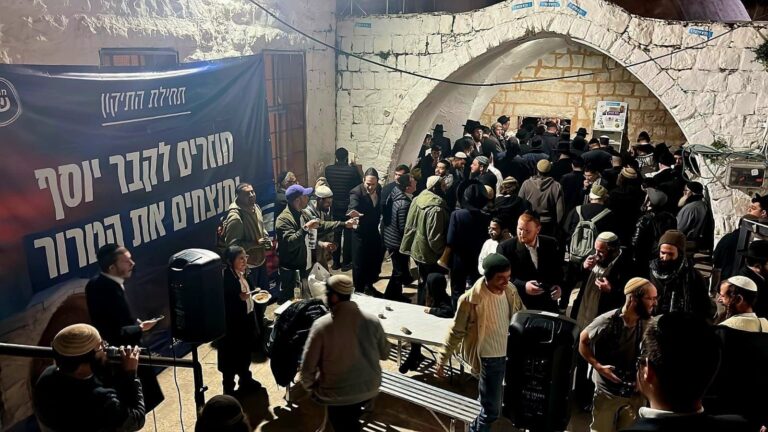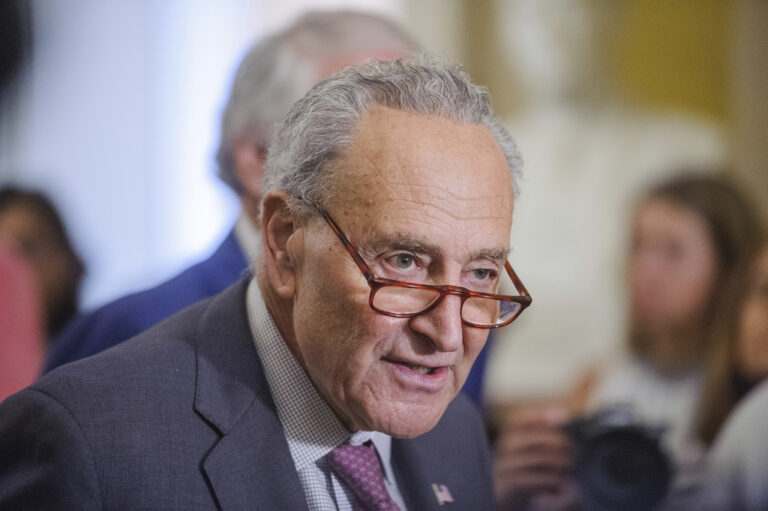The battle for an ancient desert city in war-torn Yemen has become a key to understanding wider tensions now inflaming the Middle East and the challenges facing any efforts by President Joe Biden’s administration to shift U.S. troops out of the region.
Fighting has been raging in the mountains outside of Marib as Iranian-backed Houthi rebels, who hold Yemen’s capital of Sanaa, attempt to seize the city, which is crucial to the country’s energy supplies.
Saudi Arabia, which has led a military coalition since 2015 backing Sanaa’s exiled government, has launched airstrike after airstrike to blunt the Houthi advance toward Marib. The Houthis have retaliated with drone and missile attacks deep inside Saudi Arabia, roiling global oil markets.
The battle for Marib likely will determine the outline of any political settlement in Yemen’s second civil war since the 1990s. If seized by the Houthis, the rebels can press that advantage in negotiations and even continue further south. If Marib is held by Yemen’s internationally recognized government, it will save perhaps its only stronghold as secessionists challenge its authority elsewhere.
The fight is also squeezing a pressure point on the most powerful of America’s Gulf Arab allies and ensnarling any U.S. return to Iran’s nuclear deal. It’s even complicating the Biden administration’s efforts to slowly shift the longtime mass U.S. military deployments to the Mideast to counter what it sees as the emerging threat of China and Russia.
Losing Marib would be “the final bullet in the head of the internationally recognized government,” said Abdulghani al-Iryani, a senior researcher at the Sanaa Center for Strategic Studies. “It will set the stage for the dismemberment of the Yemeni state. You’re looking at a generation of instability and humanitarian crisis. You also will look at a free-for-all theater for regional meddling.”
ANCIENT OASIS BECOMES WAR FRONT
Located 120 kilometers (75 miles) east of Sanaa, Marib sits on the edge of the Arabian Peninsula’s Empty Quarter Desert at the foot of the Sarawat Mountains running along the Red Sea. It’s believed to be the home of the biblical Queen of Sheba, who gave King Solomon riches of spices and gold. In the Quran, it was the site of massive flooding that accompanied the collapse of its ancient dam.
The disaster gripping the city today is entirely manmade. Over 800,000 refugees fleeing the Houthi takeover of Sanaa in September 2014 and the war that followed swelled the city’s population, according to the U.N. refugee agency.
Taking Marib, or otherwise cutting it off, would represent a major prize for the Houthis. It is home to oil and gas fields that international firms including Exxon Mobil Corp. and Total SA have interests. Marib’s natural gas bottling plant produces cooking gas for the nation of 29 million people. Its power plant once provided 40% of Yemen’s electricity. Marib’s modern dam is a key freshwater source for a parched nation, though it was never fully developed even in peacetime.
When Saudi Arabia entered Yemen’s war in 2015 on the side of its exiled government, the kingdom allied itself with the tribes of Marib, who long perceived Sanaa and the Houthis as disenfranchising them. Another major political power was Islah, a Sunni Islamist political party that is Yemen’s branch of the Muslim Brotherhood. These disparate forces provided a lifeline for Yemen’s embattled exiled government, which already faces pressure from allied secessionists in the south.
For a while, beginning in the fall of 2019, Saudi Arabia reached a detente with the Houthis, said Ahmed Nagi, a non-resident Yemen expert at the Carnegie Middle East Center. Citing two Houthi officials familiar with the discussions, Nagi said a back channel agreement saw both the Saudis and the rebels refrain from attacking populated areas.
But when the Houthis began to push again into Marib, the Saudis resumed a heavy bombing campaign.
For the Houthis, “they think they gain through war more than peace talks,” Nagi said. For the Saudis, “if they lose Marib, they’ll have zero cards on the negotiating table.”
YEMEN CAUGHT IN REGIONAL VISE
The escalating conflict around Marib coincides with major changes in U.S. policy toward the war. President Donald Trump’s administration had declared the Houthis a “foreign terrorist organization,” following a campaign by Saudi Arabia supporting the move.
Biden rescinded the Houthi terrorist designation after entering office. He also announced the U.S. would halt support for Saudi Arabia’s offensive combat operations in Yemen, saying: “This war has to end.”
But fighting around Marib has only escalated even as the Saudis recently offered a cease-fire deal. Iran’s frustration over the Biden administration’s failure to swiftly lift sanctions has contributed to “an intensification of attacks by groups in Iraq, and the same in Yemen,” said Aniseh Bassiri Tabrizi, an Iran scholar at Britain’s Royal United Services Institute.
“Iran is trying to deliver a message to the U.S.,” Tabrizi said. “A message that the status quo is not sustainable.”
While experts debate how much control Iran exerts over the Houthis, the rebels increasingly launch bomb-laden drones previously linked to Tehran deep inside the kingdom. Those attacks included a drone smashing into a parked commercial airliner and others targeting major oil facilities, temporarily shaking energy prices.
“The U.S. administration’s removal of the Houthis from the (foreign terrorist organization) list, unfortunately, appears to have been misinterpreted by the Houthis,” the Saudi government said in a statement to The Associated Press. “This misreading of the measure has led them, with support from the Iranian regime, to increase hostilities.”
Since the war began, the Houthis have launched over 550 bomb-laden drones and more than 350 ballistic missiles toward Saudi Arabia, the kingdom said. While that has caused damage, injuries and at least one death, the war in Yemen reportedly has seen over 130,000 people killed. Saudi Arabia repeatedly has been criticized internationally for airstrikes killing civilians and embargoes exacerbating hunger in a nation on the brink of famine.
And though Biden has pulled back support, U.S.-made aircraft and munitions sold to Saudi Arabia still target Yemen. Iran’s Supreme Leader Ayatollah Ali Khamenei has linked arming the kingdom to America allowing the war to take place.
“I am asking this question to the Americans: Did you know what would happen to the Saudis on the day that you gave them green light to enter the Yemeni war?” Khamenei asked in a March 21 speech. “Did you know that you are sending Saudi Arabia into a quagmire?”
U.S. WEIGHS MIDEAST DEPLOYMENTS
Biden’s efforts to end U.S. involvement in Yemen’s war come as his administration attempts to re-enter Iran’s nuclear deal with world powers. Indirect talks began Tuesday in Vienna.
“The Iranians are keen to trade in their Yemen card for something more durable,” said al-Iryani, the Sanaa Center researcher.
Such a deal might suit American interests. Biden’s Defense Department is looking at redeploying troops, particularly those in the Mideast, amid what experts refer to as the “great powers conflict” America faces with China and Russia.
Pulling troops from the Mideast could bolster forces America may need elsewhere. However, doing so likely will be easier said than done.
In Yemen alone, every American president since George W. Bush has launched drone strikes targeting al-Qaida in the Arabian Peninsula, long considered by Washington to be the most dangerous offshoot of the militant group. Biden himself has yet to launch any such strike, though the group still operates in the country’s east.
U.S. troops remain in Afghanistan, Iraq and Syria. Meanwhile, Gulf Arab nations like Saudi Arabia rely on U.S. forces stationed in their countries as a counterweight to Iran.
The U.S. military sent troops to Saudi Arabia in 2019, deploying anti-missile batteries amid tensions with Iran. However, American forces recently downsized that presence.
“The kingdom believes that the U.S. presence in the region can help promote the region’s security and stability by supporting allies who face transnational threats that are primarily sponsored by the Iranian regime,” the Saudi government said. It did not comment specifically on the redeployments.
Overall, American forces will remain in the Mideast as it remains crucial to global energy markets and includes major choke points at sea for trade worldwide, said Aaron Stein, the director of research at the Philadelphia-based Foreign Policy Research Institute. What those forces look like, however, will change as the U.S. weighs how to counterbalance Iran through a return to the nuclear deal, he said.
“It doesn’t solve the Iranian issue,” Stein said. “It puts us in a place to manage it, like we’re in hospice care.”
(AP)











